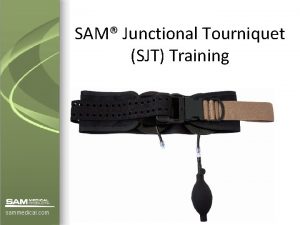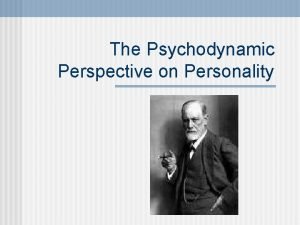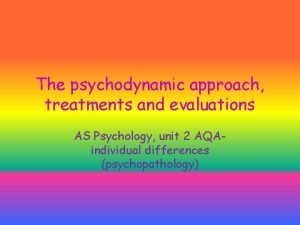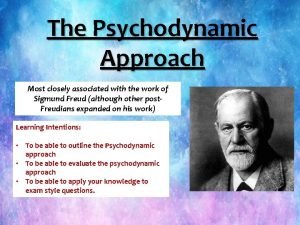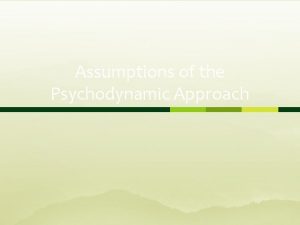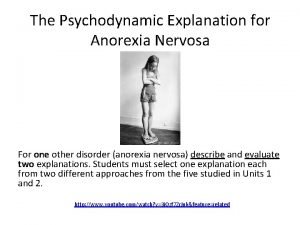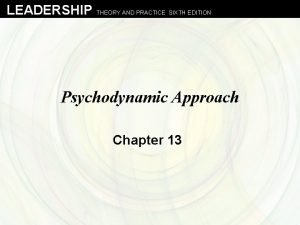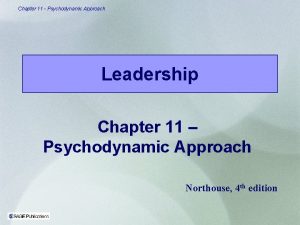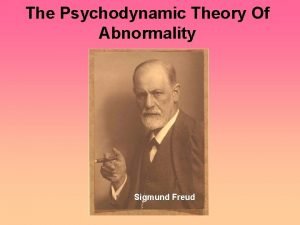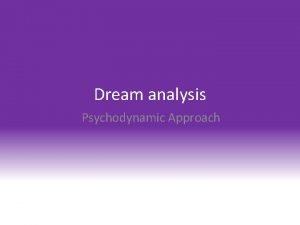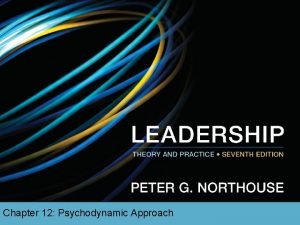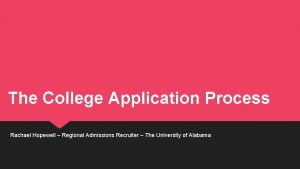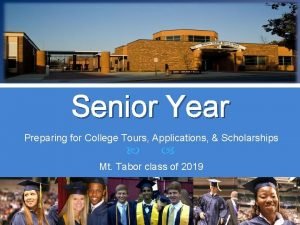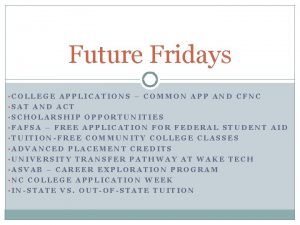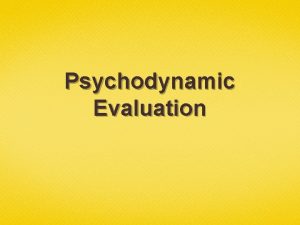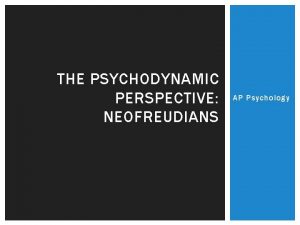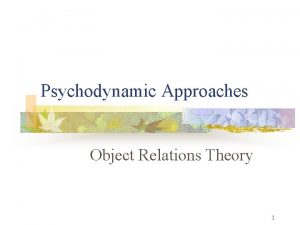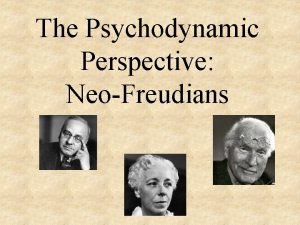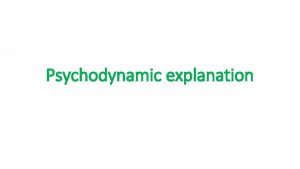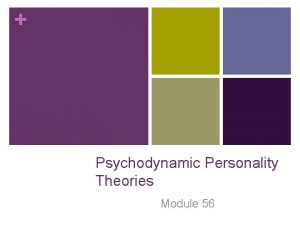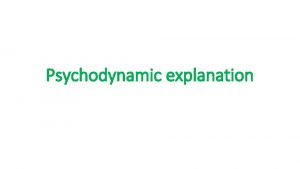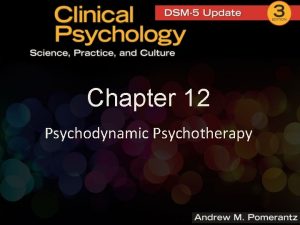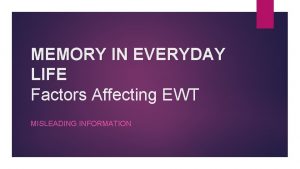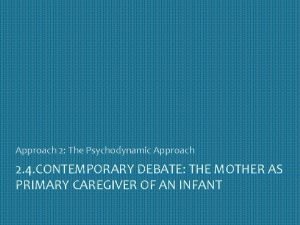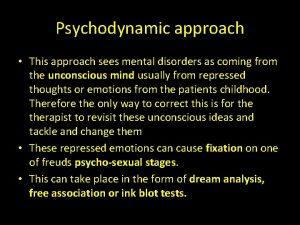Week 4 6515 Psychodynamic Approach Memory Application EWT





































- Slides: 37

Week 4 6/5/15 Psychodynamic Approach Memory Application - EWT

Psychodynamic Approach: The Basics • Behaviour is determined through past experience, inner thoughts and feelings • Early childhood experience playing an important part in how we behave as adults – Any problems that people have can be traced back to experiences in early childhood (these will be hidden in the unconscious) • Conscious and Unconscious struggles with impulses and desires (sex and aggression) • Personality development takes place in stages – Unchanging after teenage years • Problems at any stage of development can lead to consequences in later life (atypical behaviours)

Psychodynamic Approach: The Basics Freud assumed that there are 3 levels of the mind: • The conscious: – consists of those thoughts & memories which are currently the focus of attention (the small part above the surface) • The preconscious: – consists of information and ideas which can be retrieved easily from memory and brought into consciousness (just below the water line) • The unconscious: – consists of information which is either very hard or almost impossible to bring into conscious awareness (the large mass of ice below the water) – A storehouse of impulses, wishes and inaccessible memories that affect our thoughts and behaviours

Psychodynamic Approach: The Basics • Conscious – Current awareness – Actively thinking and perceiving • Pre-conscious – Storage of memories and information – Accessed with effort • Un-conscious – Hidden desires, fears and feelings and memories

Conflicts among the Id , Ego and Superego • The 3 components of personality are often in opposition: – As the Id demands instant gratification, there is conflict with the Superego’s sense of right and wrong – Therefore, the Ego must satisfy the demands of the id and superego Parent – Adult – Child

Activity • In no more than 100 words, summarise the ideas behind the psychodynamic approach

Motivated forgetting conscious • Freudian idea that forgetting happens for a reason • Thoughts & memories that are painful are forced out of consciousness unconscious The dentist? Oh…I forgot…

Repression & Memory • Internal conflict between the id, ego & superego can lead the ego defend itself though… • Defence Mechanisms e. g. Repression, regression, denial • Repression • The most basic defence mechanism: the ego pushes a threatening thought/memory out of awareness into the unconscious • This repression process is a completely automatic defence against trauma and does not involve conscious intent • According to Freud, there are no mental accidents – whatever you forget, you have unconsciously ‘chosen’ to forget it, for example; – Extreme trauma e. g. child abuse, military combat, violent crime, accidents – Everyday forgetting e. g. dental appointments, tax return, doctor’s, college

http: //eqi. org/fw_neg. htm Repression Experimental evidence to support the idea that repression of emotionally negative material does occur

Repression : Levinger & Clark (1961) • Aims: Test Freud's "repression" hypothesis that uncomfortable memories are suppressed • Procedure: Ps asked to give free associations to neutral words and negative emotionally charged words, and the time taken to respond was measured. Ps recall then tested using neutral/negative words as cues to recall their associations • Findings: In free association, the time taken to react to negative words was greater than for neutral words. Ps also were less successful in recalling negative associations subsequently. • Conclusion: Freud was right: we do repress uncomfortable memories

Evaluation of L&C (1961) • Strength: Provides experimental support for Freud's theory • Weakness 1: Lacks mundane realism: emotionally charged words have much lower emotional threat than real-life anxiety provoking stimuli. • Weakness 2: The affects seen by L+C may have been due to arousal: high levels of arousal (caused by negatively charged words) may inhibit recall at the time • Bradley and Baddeley (1990) did a similar test to Levinger & Clark and found similar results – harder to recall responses associated with emotionally charged word – But different results when delay was longer. PPs tested after 28 days remembered the emotional associations better than just after the initial test Links to MSM & idea of elaborative rehearsal – words that meant more & are rehearsed stay in LTM store

Repression: Evidence • Karon & Widener (1997) Post-traumatic amnesia: when WW 2 veterans remembered repressed memories it help reduced mental trauma • Williams (1994) victims of child abuse admitted to hospital in 1970 s. 38% no recall. 16% ‘recovered’ the memory after Repressed Memory Therapy (RMT) • RMT extremely controversial – false memories • However, Loftus and Pickrell demonstrated that it was relatively easy to implant the false memory of getting lost in a mall in about 25% of the people in their study https: //vimeo. com/45086585

Repression & memory - Evaluation • It is still difficult to distinguish unwillingness to remember from inability to remember • In many trauma cases, the problem is flashbacks, not forgetting • Recovered/repressed memory therapy evidence has many problems: – Often impossible to validate claims due to lack of corroboration – Possibility of false memories (see Loftus) • Repression is an obscure concept and a credible scientifically controlled experiment would be unethical and therefore much of the clinical evidence is weak • Naturalistic studies can be useful e. g. documented cases of childhood trauma can be followed, if the child forgets about it, this may be evidence of repression • Summary: Probably does happen, but Freud’s suggestion that most forgetting is repression is not sustainable

Errors of memory & false memory • EWT is an important area of study in cognitive psychology and memory studies. • EWT is used as evidence in criminal trails all over the world and juries trend to pay extra attention to EWT and see them as trustworthy, reliable and convincing. • BUT research has shown that EWT can be affected by many psychological factors.

Psychological Factors: 1. Reconstructive Memory and Errors 2. Leading Questions / False Memories – Loftus & Palmer 3. Anxiety and Stress 4. Weapon Focus

1. Reconstructive Memory and Errors • Human memory does not store info exactly as it was presented to us. Our memory does not work like a videotape. • We gather info from the ‘gist’ of things or underlying meanings. We make sense of information and try to fit them into schemas. • Schemas allow us to make sense of what we encounter so we can predict what is going to happen and what we should do.

Schemas • Reconstructive Memory - Bartlett (1932) • Bartlett's theory of Reconstructive Memory is crucial to an understanding of the reliability of eye witness testimony (EWT) as he suggested that recall is subject to personal interpretation dependent on our learnt or cultural norms and values- the way we make sense of our world • In other words, we tend to see and in particular interpret and recall what we see according to what we expect and assume is 'normal' in a given situation • Bartlett referred to these complete mental pictures of how things are expected to be as Schemas. These schemas may, in part, be determined by social values and therefore prejudice.

Frederick Bartlett (1932) • Bartlett tested the idea of schemas using a variety of illustrations and stories to show that memory is an active process and subject to individual interpretation and construction. • In his famous study ‘War of the Ghosts’, Bartlett asked British participants to memorise a short story about native American traditions. Experiment Time: Read the story

• The story was so different from European convention and stories that the participants did not have schemas to make sense of and understand the native American story. • Bartlett predicted that the story would be distorted in 4 ways - : – Story became shorter – Detail was lost – Details changed e. g. seal hunting became fishing – Structure was altered to become more ‘Westernised’

So what happened? • The participants attempted to fit the story into their western schemas and so distorted it during recall. • This proved that they were not recalling the info exactly as it had been presented to them but were making a ‘best guess’ story based on their understanding. • He concluded that memory is ‘the imaginative reconstruction of experience’ meaning that we reconstruct our memories to conform to our personal beliefs and experiences of the world. • ‘Effort after meaning’ describes the phenomenon of people making sense of something retrospectively.

2. Leading Questions • Loftus (1974) furthered Bartlett's work and she reasoned that witnesses to crimes do not recall events exactly as they happened, instead they create reconstructions of the crime based on their own schematic understanding of the world. • Loftus took this idea further and suggested that any new information about the crime (media, other witness statements, leading questions) had the potential to distort their recall of events. • Study: Reconstruction of Automobile Destruction

Loftus and Palmer (1974) Aim: To investigate how information provided to a witness after an event will influence their memory of that event Reconstruction of Automobile Destruction Method: Two laboratory experiments Independent measures design IV = Verb used DV = The estimate of speed or whether the P saw glass

Method – Experiment 1 • 45 student participants were shown short video clips • They were split into 5 groups, with 9 participants in each one • All of the participants were asked: ‘About how fast were the cars going when they ____ each other’ • Each group was given a different verb to fill in the blank. These verbs were ‘smashed, collided, bumped, hit or contacted’. Therefore the independent variable was the verb used. • The dependent variable was the estimate of speed given by the participants

Results – Experiment 1 VERB MEAN ESTIMATE OF SPEED (mph) Smashed 40. 8 Collided 39. 3 Bumped 38. 1 Hit 34. 0 Contacted 31. 8 What do these results show? • How the question was phrased influenced the participants’ speed estimates • When the verb ‘smashed’ was used, participants estimated that the cars were travelling much faster than when the verb ‘contacted’ was used.

Explaining the Results • Loftus and Palmer suggest 2 explanations for the results of Experiment 1: 1. Response Bias: The different speed estimates occurred because the critical word (e. g. ‘smashed’ or ‘hit’) influences or biases a person’s response. 2. Memory is altered: The critical word changes a person’s memory so they actually ‘see’ the accident differently, i. e. more or less severe. In order to prove this second point, L&P devised a second experiment – would people remember details that aren’t true?

Method – Experiment 2 • 150 student participants were shown a short film of a multi-vehicle car accident and then they were asked questions about it. • Procedure: The participants were split into 3 groups (50 per group) • One group was asked: ‘How fast were the cars going when they hit each other? ’ • The second was asked: ‘How fast were the cars going when they smashed into each other? ’ • The third group was not asked about the speed of the vehicles • One week later, all participants returned and were asked: ‘Did you see any broken glass? ’ ……There was no broken glass in the film.

Results – Experiment 2 Did you see any broken glass? Response Smashed Yes 16 No 34 Hit 7 43 Control 6 44 What do these results show – Discuss as a Group? The results show that the verb used in the original question influenced whether the participants thought they had seen broken glass.

Discussion (cont…) The results again showed that the way a question is asked can influence the answer given: This suggests that the leading question had actually altered the participants memory of the event. Loftus and Palmer suggest that 2 kinds of information go into a person’s memory for an event: 1. The person’s own perception, 2. Information supplied after the event (such as leading questions) Reconstructive Hypothesis

Group Evaluation Activity • What was the aim of the study? • How realistic were the studies? (Think about the differences between the tasks the participants did, and real life situations where you need to remember what you have seen) • Who were the participants? (Could the results be generalised to other people? ) • What were the main findings of the research and how can ths help us understand eye-witness testimony? • Any other issues (Think about the type of tasks, the content of the video, etc)

Evaluation • Ecological Validity – low (laboratory study) • In real-life situations there would be an element of surprise, so you might not be paying attention • There would be an increase in emotion – such as fear, shock, etc. There may be victims. • You might not be asked questions until some time later. • You may have the opportunity to discuss what you saw with other people – increasing change of confabulation – the production of fabricated, distorted or misinterpreted memories about oneself or an event, without the conscious intention to deceive • The participants were all students so might not be representative of the general population.

However… Loftus (1979 b) • Finding: when shown a series of pictures of a man stealing a red wallet from a women’s hand bag, 98% correctly identified the colour. • Furthermore despite later being given an erroneous (flawed) description of the wallet as brown, participants persisted in describing the wallet as red. • Conclusions: – This shows that we may have good recall for important information, and the recall of such information may not be distorted even by misleading information.

Eye Witness Testimony Video http: //www. youtube. com/watch? v=I 4 V 6 ao. Yu. Dcg

3. Anxiety / Stress • Depending on the incident, you may have been scared and this will affect your recall. • Research suggests that frightening situations may affect recall because attention may be diverted The Yerkes- Dobson Curve/Law (1908) says that performance (memory/ recall) is best in moderately arousing conditions.

Theories • Hosch & Cooper (1982)- compared the accuracy with which Participants could identify the thief from 6 photos. • The thief had been seen entering the room while the P was engaged in a task and had apparently stolen either the P’s watch, another persons calculator or nothing. • The accuracy of Identifying the thief was: – 71% for watch; 67% for calculator; and 33% for nothing. • Having something of their own stolen was most stressful for the P’s but also most successfully recalled.

However • Real life application: – Riniolo et al (2003) examined Eye Witness Testimony from 1912 of Titanic survivors – 75% said ship broke up when sinking – Historians ignored this said it sunk as a whole ship – 1985 Titanic discoverer on ocean bed in 2 pieces

Reading Anxiety & Weapons focus • Loftus et al 1987. Identified weapons focus. There were 2 conditions: • In both conditions participants heard a discussion in an adjoining room. – In condition 1 a man emerged holding a pen with grease on his hands. – In condition 2 the discussion was more heated and a man emerged holding a paper knife covered in blood • When asked to identify the man from 50 photos, participants in condition 1 were 49% accurate compared with 33% accuracy in condition 2. Conclusions: • This suggests that the weapon may have distracted attention from the man and might explain why eyewitnesses sometimes have poor recall for certain details of a crime

Critics of Loftus: EWT in real life – Armed Robbery • Yuille and Cutshall 1986 interviewed 13 people who had witnessed an armed robbery in Canada. • The interviews took place more than 4 months after the crime and included two misleading questions. • Findings: Despite these questions, the witnesses provided accurate recall that matched their initial detailed reports. • Conclusions: – This suggests that post event information may not affect memory in real life. – This study also shows that EWT can be very reliable.
 Embedded web technology documentation
Embedded web technology documentation 6515-01-618-7475
6515-01-618-7475 Ewt
Ewt Psychodynamic perspective definition psychology
Psychodynamic perspective definition psychology Evaluation of the psychodynamic approach
Evaluation of the psychodynamic approach Psychodynamic approach psychology
Psychodynamic approach psychology Weaknesses of the psychodynamic approach
Weaknesses of the psychodynamic approach Key assumptions of the psychodynamic approach
Key assumptions of the psychodynamic approach Hilda bruch
Hilda bruch Psychodynamic approach to leadership
Psychodynamic approach to leadership Psychodynamic approach to leadership
Psychodynamic approach to leadership Psychodynamic approach to personality
Psychodynamic approach to personality Sigmund freud psychodynamic approach
Sigmund freud psychodynamic approach Strengths and weaknesses of the psychodynamic approach
Strengths and weaknesses of the psychodynamic approach Psychodynamic theory of leadership
Psychodynamic theory of leadership Week by week plans for documenting children's development
Week by week plans for documenting children's development Cfnc free application week
Cfnc free application week Cfnc free application week
Cfnc free application week Cfnc free application week
Cfnc free application week Cfnc college application
Cfnc college application Episodic memory vs semantic memory
Episodic memory vs semantic memory Explicit memory
Explicit memory Long term memory vs short term memory
Long term memory vs short term memory Internal memory and external memory
Internal memory and external memory Primary memory and secondary memory
Primary memory and secondary memory Physical address vs logical address
Physical address vs logical address Which memory is the actual working memory?
Which memory is the actual working memory? Virtual memory
Virtual memory Virtual memory in memory hierarchy consists of
Virtual memory in memory hierarchy consists of Eidetic memory vs iconic memory
Eidetic memory vs iconic memory Shared memory vs distributed memory
Shared memory vs distributed memory Datagram network
Datagram network Theoretical models of counseling
Theoretical models of counseling Waterfall and shower approach
Waterfall and shower approach Multiple conflict
Multiple conflict Bandura's reciprocal determinism
Bandura's reciprocal determinism Approach approach
Approach approach Traditional approach to systems implementation
Traditional approach to systems implementation

